Caring for your pool water can be a convoluted process at times. You’ll need to understand each part of the pool, and how they work in unison to provide clean water for swimming.
One important component in pools is the multiport valve. This pool valve is connected to your pool filter, directing water flow.
What makes pool multiport valves so crucial to your pool system? Let’s explore.
Your Valve May Vary
Even though there are 3 types of pool filters (sand, cartridge, and diatomaceous earth/DE), multiport valves are only used on sand and DE filters.
The tanks have a top opening where this valve is inserted and connected, although sometimes the valve is connected to the side of the tank. The valve comes with a handle which allows you to rotate it to multiple positions, depending on how you want to direct the flow of water in your pool system.
However, not all valves are the same.
Some can have up to 7 different positional modes to choose from, whereas 6 is more common due to the inclusion of a “Winterize” mode to be used during the cold months.
7 Multiport Valve Positions
Each position on a multiport valve is designed for a specific function. Let’s take a closer look at each of them.
1. Filter
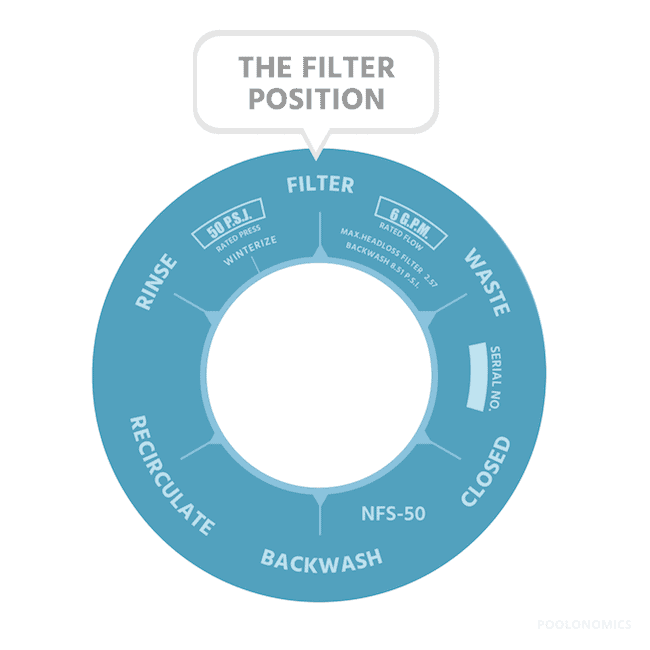
The “Filter” position is the most common position you’ll keep the multiport valve set to. Surprise surprise, it’s the position that will filter your pool’s water.
The valve has a “Pump” port which takes in water that’s directed from the pool pump and sends it to the filter tank. Once the water passes through the filter, it will be directed back to the pool via the “Return” port.
For sand filters, water flows top to bottom in the tank, whereas DE filters flow bottom to top.
2. Waste
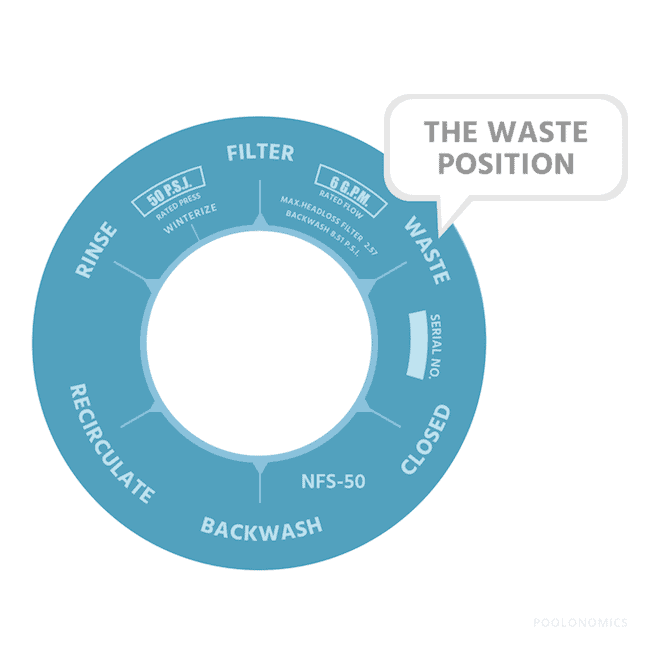
The “Waste” setting is a bypass position on the multiport valve. After water is sucked in by the pool pump, it’s directed straight out of the system before it can come into contact with the filter.
This setting is predominantly used when draining a pool. Draining is done for numerous reasons, including cleaning the pool, repairing the finish, or diluting the water due to an overabundance of certain chemicals (ie. cyanuric acid).
Important: Fully draining a pool can cause your pool to pop out of the ground, so you should only do partial drains when diluting.
This setting can also be used to remove harmful debris in the water, such as algae. Algae can clog up your filter, and even dead algae can be problematic to filter out. This means various types of algae can be blown back into the pool via the return jets. Vacuuming algae to “Waste” is the safest option.
As for how water is actually removed, some pools have a dedicated waste line plumbed in, making it easy to dispose of wastewater. For pools that don’t have a waste line, directing wastewater out of the pool system has to be done by attaching a hose to the filter, and running it to a safe drainage point, such as a sewer.
3. Winter
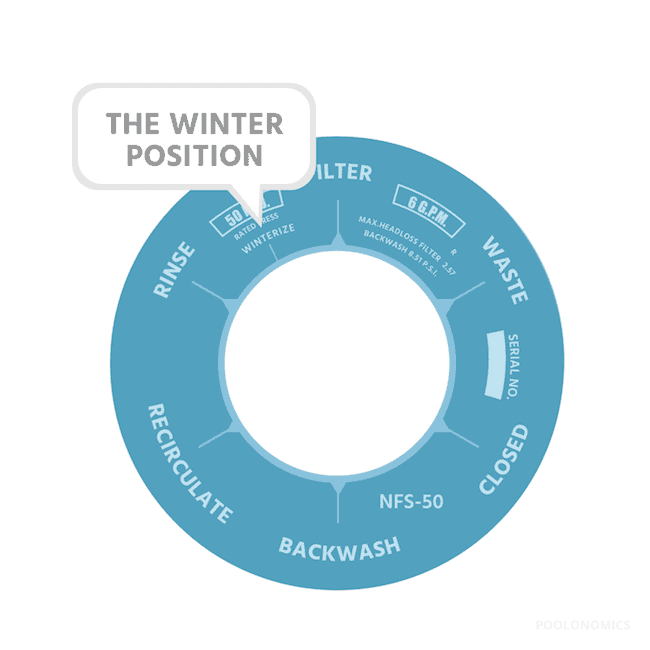
The “Winter” position on multiport valves isn’t something that’s found on every model. In reality, it’s more of an “in between” position, as it doesn’t lock into place like the standard positions.
“Winter” is used when the pool is closed down for the season. During the cold months, if any water is trapped in the valve, it will expand and freeze. This can cause damage to the valve itself, as the cold weather and ice will cause it to crack.
To compensate for this, moving the valve into the “Winter” position raises the diverter a quarter inch above the valve’s ports, so no water can move through it. Keeping it suspended this way protects the valve from winter’s fury, so it’s ready to go when you reopen the pool.
4. Closed
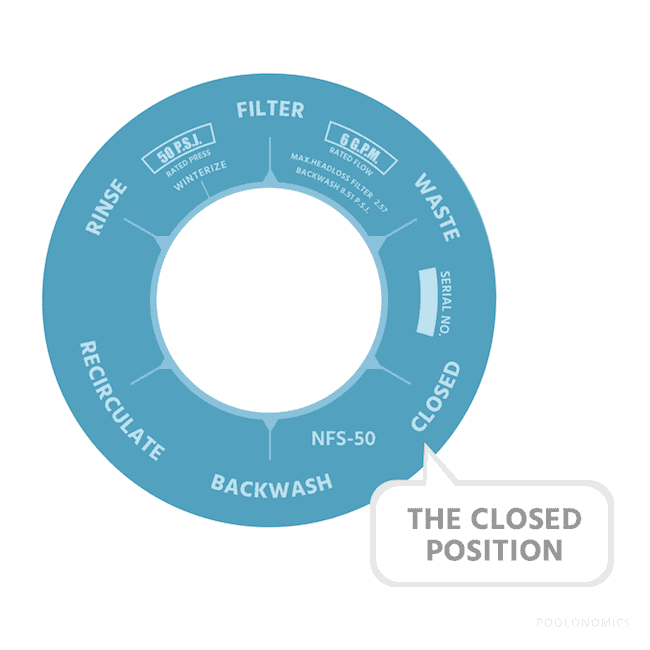
The “Closed” setting won’t be needed too often, especially since using your pool pump with the multiport valve “Closed” will do serious damage to your equipment.
As such, this position is mainly used when servicing the pool pump, but you can also use other valves in your pool system to accomplish the same thing.
Additionally, you may choose “Closed” if you’re blowing out suction lines while winterizing the pool. Blowing out ensures there’s no residual water in the pipes that can freeze, resulting in cracks and damage over the winter months.
5. Backwash
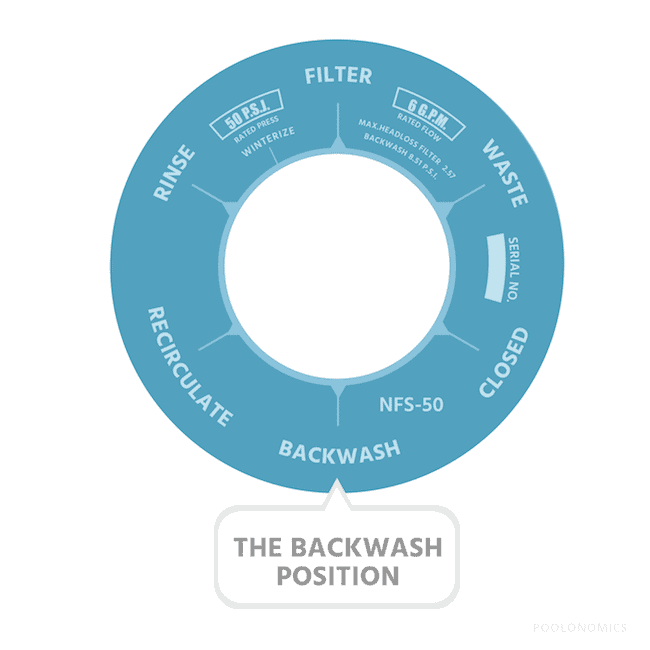
“Backwash” will be a common position you’ll use with your sand or DE filter. It’s a method of filter cleaning that works by reversing the flow of water inside the filtration tank. This means a sand filter will flow bottom to top, and a DE filter reverses top to bottom.
By switching the direction of the water, it flushes debris that has built up on the filter medium. When it’s in the “Backwash” position, water is sent out the “Waste” port rather than the “Return” port (which sends water back into the pool via the return jets).
Backwashing is usually done once a week or during your regular maintenance schedule. When the filter’s pressure gauge creeps up 8 to 10 PSI over the initial PSI level, you’ll know it’s time to backwash.
6. Recirculate
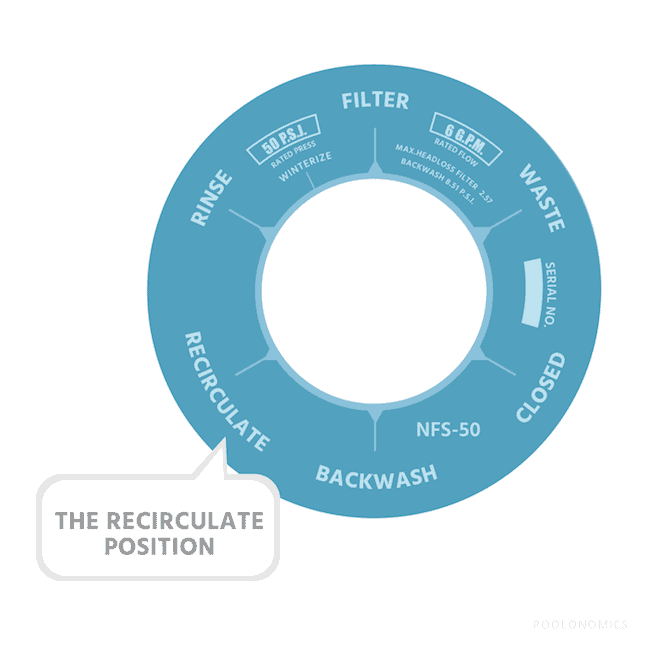
Like the “Waste” setting, “Recirculate” is another bypass position on the multiport valve. Instead of going through the filter, the water moves from the pool pump straight to the “Return” port.
Why would you want to send unfiltered water back into the pool?
Sometimes the filter is broken or can’t be used for whatever reason. This setting will allow you to continue circulating the pool water, keeping it from stagnating and ensuring sanitizing chemicals stay well distributed. Pools that are stagnant for long periods are a breeding ground for mosquito larvae to infest your pool.
Keeping your pool water clean, even if only with a sanitizing agent, is still better than nothing until you get your filter fixed.
7. Rinse
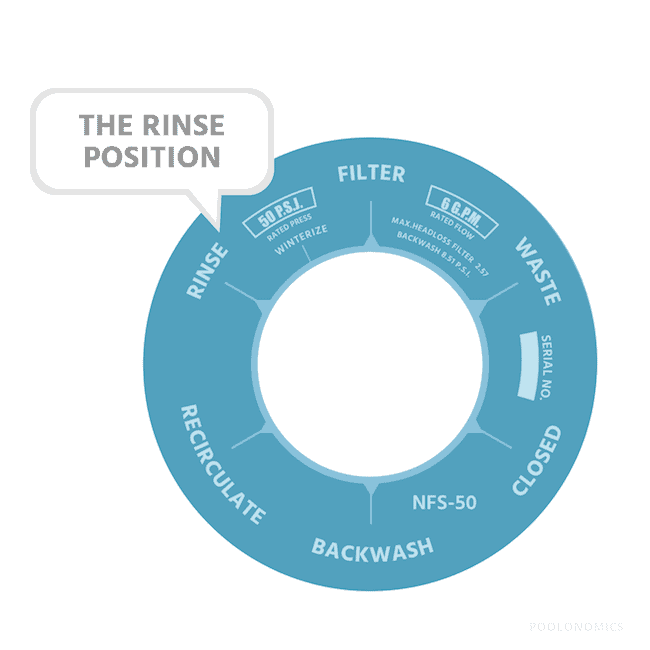
“Rinse” is a position that you can set the valve to after you’ve performed a backwash, and is mainly used with sand filters. Sometimes after a backwash, leftover sediment remains in the filter tank and can be blown into the pool once you run the system normally again.
To ensure this doesn’t happen, rinsing for 20 seconds directs water out the “Waste” port, rather than the “Return” port.
As for DE filters, it’s rare to use the “Rinse” setting with them due to the way the filter is designed. DE filters are the most efficient filters, but aside from being able to backwash them, they require you take the filter out of the tank and hose it down by hand.
Water Go, Where It Flow.
Pool multiport valves are an integral component of a swimming pool.
With each position, you can direct water in a different way, helping you perform a variety of maintenance tasks to keep the pool in top shape.
